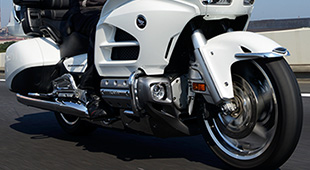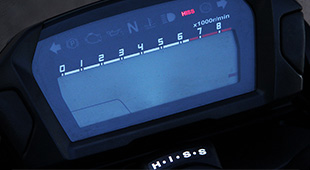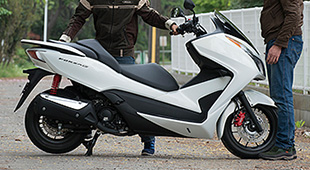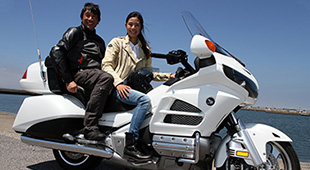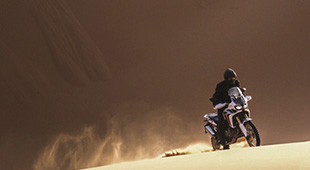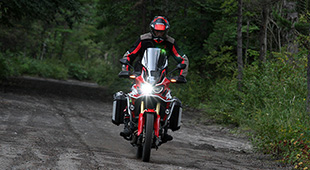Tech Views — Vol.1 Dual Clutch Transmission
VFR1200X Crosstourer (Dual Clutch Transmission)
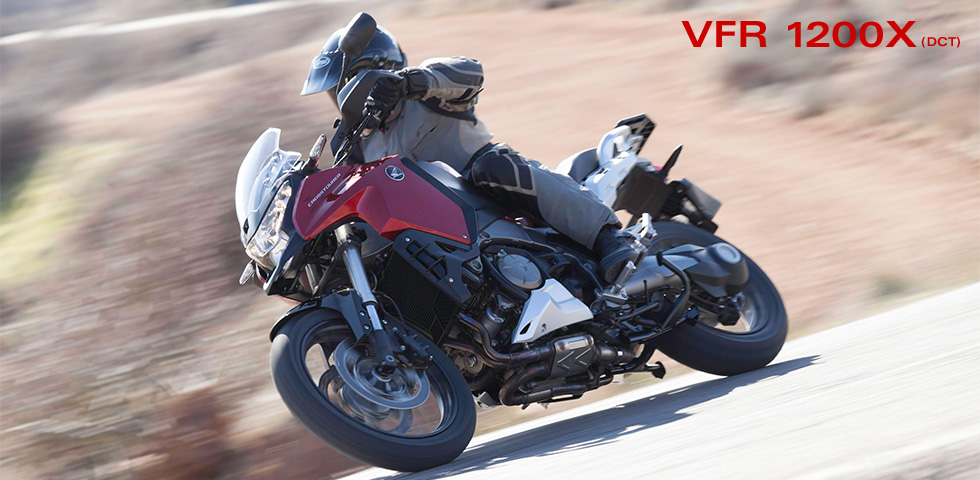
VFR1200X Crosstourer (Dual Clutch Transmission)
Far Exceeding My Expectations, My Experience With the Dual Clutch Transmission Changed Me.
The VFR name has, over the years, deeply permeated Honda as a high-tech icon featuring leading technology inherited directly from the company's racing machines. The VFR1200X Crosstourer is an Adventure Touring bike powered by the latest VFR V4 engine. Like the VFR1200F, the Crosstourer comes in both manual 6-speed and Dual Clutch Transmission versions. For this test I rode the Dual Clutch Transmission version of the VFR1200X.
As with most Adventure Tourers, the Crosstourer is not only equipped with a large fuel tank and fairing, but also with hardware for mounting a rear carrier and pannier bags. The Crosstourer's standard equipment also includes both traction control and Combined-ABS, which compare admirably to all other riding machines in its class.
Hidden away within its bodywork, the bike's powerful V4 engine definitely has an edge over its rivals. And weighing in at all of 285kg, it is by no means a lightweight. However, since its mass is well centralized, I was surprised at how light it felt.
Setting the Dual Clutch Transmission selector switch to D for Drive and rolling on the throttle, any feelings of tension I may have had about handling such a big motorcycle were relieved by not having to finesse a clutch into motion. With the smooth power output of its four-cylinder engine, I left all clutch operation to the Dual Clutch Transmission and simply enjoyed the sound of changing speed and changing gears.
Riding in the range of 2,500 to 3,000 rpms to take full advantage of the V4 engine's powerful torque, I was able to fully enjoy the engine's revs and acceleration even without directly operating the clutch and gear shifts. This is indeed one of the main merits of the Dual Clutch Transmission, and can only be achieved by a system that utilizes essentially the same gear system as a manual transmission model. Moreover, since there were so few power lapses or surges when starting out or changing gears, I felt that I could also enjoy a relaxing ride carrying a passenger without bumping helmets at every shift.
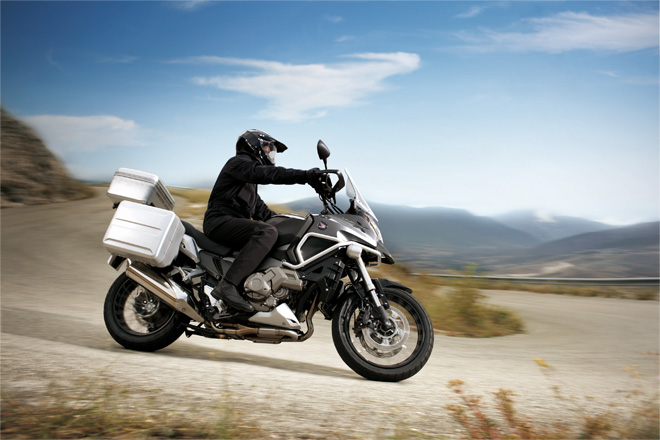
Long-distance rides were also exceedingly comfortable. Even on the highway, the V4 engine responds quickly to all throttle inputs. Turning the throttle up full resulted in the Dual Clutch Transmission automatically downshifting as needed for overtaking and passing slower cars and trucks, although the acceleration available in 6th gear seemed to be more than enough for the most part. After overtaking was completed, the gearbox simply slipped back into its more relaxed top gear again.
Exploring country roads and charging up mountain passes, the Dual Clutch Transmission offered easy selection of Drive and Sport modes, the latter shifting at higher rpms, and a Manual mode that allows the rider to instantly select gears at press of a button—two, actually, the left index finger shifting up and the thumb down. However, the VFR has more than enough power to accelerate strongly, whether running in Drive mode or manually downshifting when stronger acceleration or engine braking are desired in more aggressively sporty riding. And, since the transmission's operation effectively smoothes out any shocks related to gear changes, it was a pleasant surprise to find that I could even change gears whilst in the middle of a deeply banked turn with little or no effect on handling.
Some people may dismiss automatic, or clutch-free motorcycles as being intended for beginning motorcyclists, and certainly that is one appeal of the Dual Clutch Transmission. However, I'd rather that expert riders like myself, who have ridden continuously for as long as over 30 years, to experience a motorcycle such as this.
Like the auto-focus function of cameras that first appeared in the 1980s, there is no denying that there's a certain pleasure to be derived from bringing an object into focus by turning the ring on a lens with one's fingertips. However, if the camera quickly focuses by simply half-pressing the shutter button, the time saved can be used for consideration of composition or expression in the photos being taken. This is also true of the Dual Clutch Transmission, and its use enables us to focus on the important parts of riding and how we enjoy it. So, Honda's engineers created the Dual Clutch Transmission so that riders can better concentrate on those aspects of riding.
I also rode the VFR1200X on dirt roads, where it proved to be smooth and gentle with its traction control switched ON. If one were to keep pouring on the power of that big V4 engine with the traction control OFF, the rear tire would tear up the road and wag the bike's tail from side to side. Even in this case, there was a feeling of direction connection between the throttle and the rear wheel, as can be felt with ordinary manual transmission models. And when standing on the pegs over rough terrain covered with holes and gaps, I felt no need to worry about the clutch lever's angle of operation, thus relieving me of any stress. I could focus better on anything I needed to do, including line selection and drifting the tail out of corners.
To sum it up, the Dual Clutch Transmission really helps one enjoy riding more, regardless of the rider's skill level going in.

Smooth gear changes and clutch operation also help reduce fatigue, especially when riding two-up.
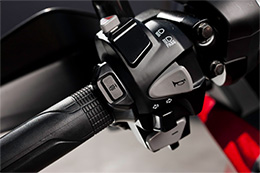
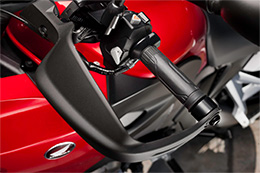
The downshift thumb switch (-) and upshift switch (+) on the front of the left-side switch module offer effortless gear shifting control within easy reach from the hand grip.
TRANSMISSION TECHNOLOGIES - DUAL CLUTCH TRANSMISSION -
Honda has developed a motorcycle transmission with automated clutch and shift operation that delivers the same riding enjoyment as a manual transmission.
- TOP
- VFR1200F
- VFR1200X
- NC700S
- NC700X
- CTX
- NC750S / NC750X
- Africa Twin
- X-ADV
- Q&A
- User Reviews

